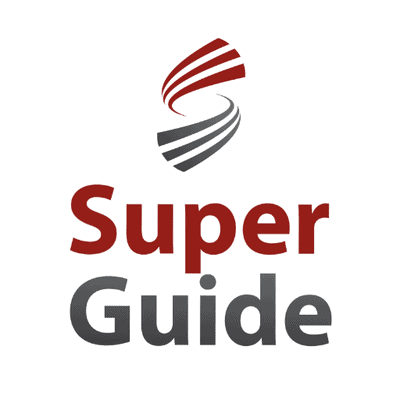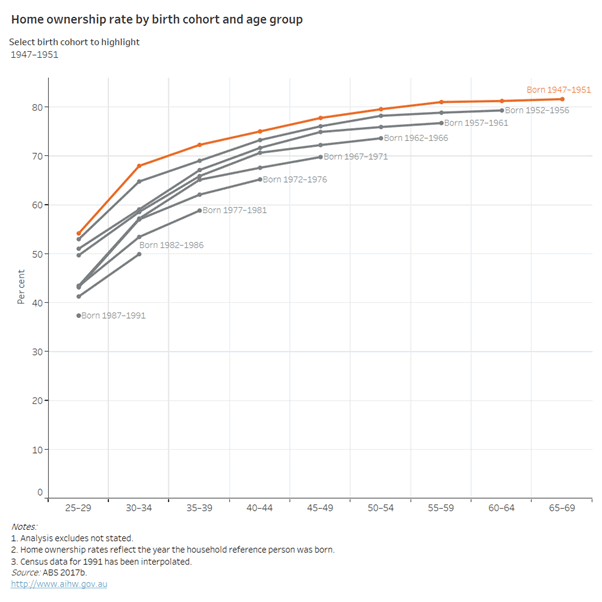24 November 2020:
Retirement planning often begins and ends with a discussion about how much super you have and whether it’s enough. While super is important, it’s not the only source of income and support in retirement.
If you’re reading this at home, the missing piece of your retirement income conundrum could be closer than you think. You’re sitting in it.
The three pillars
Australia’s retirement system is underpinned by three potential sources of income, or three pillars:
- A means-tested Age Pension,
- Compulsory superannuation, and
- Voluntary savings.
However, the terms of reference for the government’s Retirement Income Review explicitly include home ownership as part of the third pillar. That is, the government is signalling that the family home should be regarded as a form of savings.
This may come as a surprise to Aussies who regard their home as their castle. It also begs the question: How and when can these savings be withdrawn?
Note: The final report of the Retirement Income Review was released in November 2020. One of its key findings was the untapped potential of the family home.
“The home is the most important component of voluntary savings and is an important factor influencing retirement outcomes and how people feel about retirement. Homeowners have lower housing costs and an asset that can be drawn on in retirement. Using relatively small portions of home equity through the Pension Loans Scheme or similar equity release products can substantially improve retirement incomes for many people.”
One home many functions
A family home that is fully paid for or close to it when you retire provides more than a roof over your head. It is also:
- A store of tax-free wealth, as the family home is not subject to capital gains tax when sold.
- A way of maximising Age Pension entitlements as it is not included in the assets or income tests.
- A potential way of financing residential aged care.
- A future bequest to your children.
When you think about your family home that way, it is more like the cornerstone of your retirement plan than a decorative plinth as it underpins all three pillars.
In Australia, for the reasons listed above, the tax treatment of the family home leads to a perverse incentive to own outright the biggest, most expensive home you can afford as you head into retirement.
For all the talk of super, most Australians enter retirement with more wealth in their home than their super.
Asset rich, income poor
Australian retirees are some of the wealthiest in the world, with median household wealth of around $1.4 million. Yet close to $1 million of this wealth is tied up in the family home.
That’s partly because today’s retirees – especially women and anyone with a broken work history – haven’t had the full benefit of compulsory super to sustain a comfortable standard of living in retirement. However, they do have relatively high levels of home ownership.
Around 75% of retirees own their home, including 1.8 million seniors on the Age Pension. According to the Grattan Institute, home ownership among retirees is on course to drop to 57% by 2056, which will create a new set of challenges, although future generations of retirees will have more super.
Speaking recently at the Household Capital Third Pillar Forum, Professor Hazel Bateman of the UNSW ARC Centre for Population Aging and Research said Australian homeowners aged between 60 and 80 have 10.5% of their assets in super, over 61% in housing and 28% in other financial assets.
Yet the focus of retirement planning is fixed on super. Go figure.
Super gap is closing too slowly for some
According to Treasury estimates, around 65% of super account balances at retirement are currently less than $250,000. While that percentage is set to drop to 35% over the next 20 years, that’s small cheer for today’s retirees living on a full Age Pension topped up with a little income from super.
At the upper end of the scale, 10% of today’s retirees have more than $750,000, which should rise to 15% in 20 years. This group is likely to have a home and other resources to fund a comfortable retirement lifestyle.
While the percentage in the middle, with $250,000 to $750,000 will double from around 25% now to 50% over the next two decades.
For this middle group, retirement planning is complex according to Andrew Boal, chief executive of Rice Warner Actuaries. Also speaking at the Third Pillars Forum, he said most will receive a part-Age Pension as their super runs low, but they face complex income and assets tests depending on whether they own a home or have a partner.
Boal says this middle group may need to access their home equity to fund the retirement lifestyle they aspire to. However, he says many are reluctant to downsize or take out a reverse mortgage in case they need their home to fund aged care if their health deteriorates.
This is borne out by the fact that most retirees die with around 30% of their super intact. Yet many retirees will have lived more frugally than they needed to, often in a home that becomes a source of worry as much as a comfort when they can no longer afford to maintain it or pay for help mowing the lawns or cleaning.
No such thing as a standard retirement
Using the ASFA Retirement Standard as a guide, Prof. Bateman says a combination of income from super and the Age Pension is generally enough to provide income for regular household expenses.
According to ASFA’s sample household budgets, the annual income needed for a comfortable retirement is currently set at around $62,000 for couples and $44,000 for singles. That’s significantly higher than the Age Pension which is currently set at around $37,000 for couples and $25,000 for singles.
But what happens if you need to replace your car, repair the roof, pay hefty out-of-pocket medical expenses, or fund aged care either in the home or a residential facility?
Prof. Bateman says studies have shown that most people use a form of mental accounting which sets aside super for income, other financial assets for emergencies or precautionary saving and the family home for bequests.
Bob Officer, professor emeritus at the University of Melbourne and chairman of Acorn Capital says it makes no sense to live like a pauper to hang onto your home, especially for retirees without children or dependents. And now that we are living longer, the ‘kids’ are often in their 60s by the time they inherit and no longer need help. Or at least, they may not need the full value of the family home.
For these reasons, there is growing interest from retirees and the government in financial products that allow retirees to tap into their home equity.
Unlocking housing wealth
For historic reasons, reverse mortgages have not gained much traction in Australia. But that’s slowly changing, following tighter regulation (see Tighter regulation of reverse mortgages below) and the impact of low interest rates and low economic growth on retirement incomes.
So, what are they and how do they work?
Reverse Mortgage: Because of the negative connotations of the name, many providers prefer to call their product ‘’equity release” or “home equity” schemes. A reverse mortgage allows you to borrow money against the equity you have built up in your home, that is, the value of your home less any mortgage debt outstanding. Unlike the PLS, drawdowns can be taken as a lump sum, income stream, line of credit or combination of these.
Interest is charged like a normal mortgage but, rather than pay as you go, all interest is added to the initial loan repayment. Current interest rates charged by commercial reverse mortgage providers start at 8.95%. You retain ownership of your home and can live there as long as you like. The loan is repaid when you sell or after you die. There are caps on the amount of equity you can withdraw, depending on your age, and you can never end up owing more than the value of your home.
For more information see Reverse mortgages: What are they and how do they work?
The Pension Loans Scheme (PLS): The PLS is a reverse mortgage offered by the federal government via Centrelink, but it too prefers a more benign-sounding name. It allows Australian citizens/residents of Age Pension age (currently 66 and over) who own freehold property anywhere in Australia to receive a tax-free fortnightly income stream by taking out a loan against the equity in their home. Unlike commercial reverse mortgages, you can only access your home equity as an income stream, not a lump sum. However, the current interest rate of 4.5% is lower than commercial rates although the gap is closing.
For more information see What is the Pension Loans Scheme and how does it work?
Tighter regulation of reverse mortgages
Reverse mortgages have long suffered from an image problem among consumers who tended to dismiss them as high risk and potentially dangerous. While there are still risks, the regulation of these products is much improved, according to ex-ASIC deputy chair, Peter Kell.
Kell says there are now consumer protection laws specific to these products as well as general consumer protection laws.
Some of the main consumer protections are:
- A no negative equity guarantee since 2012, which means borrowers can’t end up owing more to the lender than the value of their home when it’s sold.
- Borrowers can remain in their home until they die or decide to move.
- Lenders must give borrowers projections of the home equity taken using ASIC’s MoneySmart Reverse Mortgage Calculator.
- Reverse mortgages are covered by laws that prohibit unfair contract terms.
- Product providers must be licensed and a member of the Financial Complaints Authority which can hear consumers’ complaints for free.
Growing awareness of equity release
Although the PLS has been operating for 35 years, the take-up was low because few people knew about it. But an extension of the eligibility criteria in July 2019 resulted in a jump in participants to 3,100 in the 2019/20 financial year compared with less than 800 the previous year.
According to Pension Boost, a company set up to guide people through the PLS application process, the median house value of people using their service is $525,000 (ranging from $130,000 to $5 million). Regional and rural customers account for 55% of applications and 48% of applicants still have mortgages.
Josh Funder, chief executive of reverse mortgage provider Household Capital, agrees that demand and awareness has increased recently due to a convergence of factors.
“COVID and the pandemic-related recession has hit retirees hard. Super balances are volatile with a lower growth outlook, term deposits are effectively zero, dividends are much reduced and rental income is low and volatile,” he says.
All of this has made retirees cautious about spending and more proactive about seeking new sources of income.
Also bubbling away in the background, the impact of COVID and the horror stories emerging from the Aged Care Royal Commission have made older Australians more determined to ‘age in place’. A survey conducted for Household Capital in October 2020 found 73% of homeowners over age 60 wish to remain in their own home and view it as the safest place to be.
So how are retirees tapping into their home equity and what strategies are available?
Strategies for home equity release
Funder says retirees are using equity release for a variety of reasons, including:
- Topping up retirement income and investments,
- Refinancing bank debt,
- Home renovation,
- Helping the kids and grandkids,
- A combination of the above.
If you wish to continue living in your home for as long as possible, Funder says drawing income from your home equity should be viewed as part of your long-term retirement income plan, rather than a solution to urgent short-term needs.
Case study
Peter and Kiyomi are aged 78 and 69 respectively. They have a home worth $700,000 and receive a full Age Pension plus a modest pension from their super. They would like to top up their income to do more of the things they enjoy.
To complement their Age Pension and super, they draw down $750 a fortnight using a home equity product. For extra peace of mind, they also establish a contingency fund of $30,000 which will allow them to pay for any large one-off expenses without relying on their credit card.
In 10 years, they anticipate they will still have around 75% of their home equity remaining.
Based on the traditional rule of thumb that says a 4% drawdown of your available investments should be enough to fund 30 years of retirement, Funder would like to see people adopting a 3+1 strategy. That is, a 3% drawdown from your super plus a 1% drawdown from your home equity.
He says actuarial modelling shows a modest drawdown of 1% of your home equity each year in retirement should be enough to provide a sustainable and adequate retirement income. By age 90, most people should still own more than 50% of the value of their home.
Case study
Evan and Claire are homeowners aged 65 and 67. Using a 3+1 strategy they would have used less than 50% of their home equity by age 90, by which time they would have lived for 25 years on a better income than that provided by super and the Age Pension alone. Even if the couple live to 100, they will still have capital in the form of home equity at their disposal.
Prof. Officer thinks home equity release could provide a valuable source of income for asset rich, income poor retirees, but he stresses it is not for everyone. Some people will be better off in aged care late in life, rather than struggling in their own home.
He says home equity release is most likely to be attractive for retirees in their 70s, sitting in an expensive house but with a dwindling super balance and a life expectancy of 10 years or more.
Case study
Joe and Angela are aged 77 and 75 respectively, with a home worth $850,000. If they withdraw $255,000 home equity as a lump sum, and invest it with a yield 4% yield, they could have an extra $31,000 a year over the next 10 years to supplement their income from super. What’s more, after 10 years they could expect to preserve 63% of the value of their home.
Missing links in retirement income system
While the framework and products are already in place to allow retirees to tap into their home equity, there is still a lack of cohesion between the three pillars of our retirement income system.
Prof. Officer would like retirees to be able to roll equity release funds into super without it being included in the Age Pension assets test.
After age 67 it is generally not possible to put any more money into super if you’re no longer working. One exception is making downsizer contributions if you sell your home, and some argue there is a case for treating equity release contributions in a similar way.
Fortunately, it is believed the Morrison Government is open to ideas that would better integrate the family home into the broader retirement income system. As always though, the devil is in the detail.
The Retirement Income Review suggested that including the home in the Age Pension assets test (it is excluded now) might tempt more retirees to access the equity in their home to help fund their retirement. While that would be an equitable solution – putting homeowners on a more even playing field with renters – it would face fierce opposition.
Unpalatable options aside, greater flexibility can’t come fast enough for many retirees currently dealing with declining income.
The bottom line
The family home is often overlooked as a potential source of funds in retirement as well as being a roof over your head. But awareness is growing as retirees search for ways to boost their income in the face of low investment returns and an Age Pension that is not increasing as much as most would wish.
Home equity products have come a long way and those on offer in Australia are now highly regulated. If you are considering drawing funds from home equity, it needs to be viewed as part of your overall retirement income plan. You should also consider seeking independent financial advice.
Household Capital Pty Limited ACN 618 068 214 is the issuer of the information on this website. Household Capital Pty Limited ACN 618 068 214, Australian Credit Licence 545906, is the Servicer for the credit provider Household Capital Services Pty Limited ACN 625 860 764. HOUSEHOLD CAPITAL, HOUSEHOLD TRANSFER, LIVE WELL AT HOME and the Star Device are trademarks of Household Capital Pty Ltd








